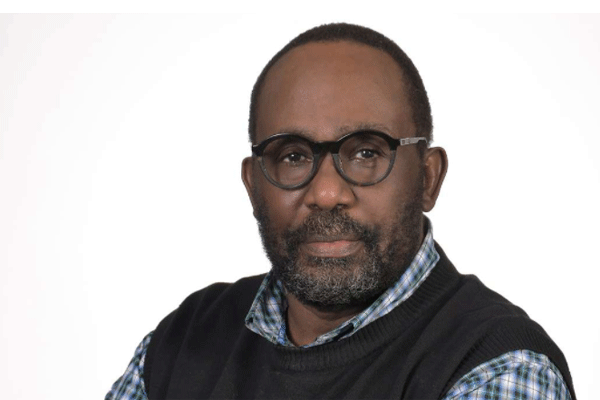Prime
The Kiga order: Three big western Uganda trends

Author: Charles Onyango Obbo. PHOTO/FILE
What you need to know:
- The Baganda mainly focused on business in other parts of Uganda, missionary work with the Protestant and Catholic churches, and being colonial-era administrators. The difference with the Bakiga is that they play at all levels; they do the top-end business; they dip into small business; they do the street-level mkokoteni pushing, and they toil long in the fields. No other group has an answer to that.
Last week in “Saints and sinners: 5 big Northern Uganda trends”, we examined some insights gleaned from a nearly 4,000 kilometres bird’s eye view tour of northeast, northern, southwest, and western Uganda.
In this second and last of the series, we spotlight the differences between southwest and western Uganda. There are many similarities between northern and western Uganda, of course, but that is a story for another day. In the end, however, they still all reveal how this nation is changing.
“The Kigazisation of Western Uganda and Triumph of Kiga Labour”: Some of the most inescapable things about the western region, especially when you approach from Murchison Falls Park, through Bunyoro, Tooro, Kasese, cut through the middle of Ankole, and make your way through the treacherous and windy roads of Kigezi up to Kisoro, the visible evidence of migration by the Bakiga, and success of Kiga capital and labour.
There are now predominantly Bakiga districts in Bunyoro (Kibaale and Kagadi). And all around that stretch described above, many towns depend on Kiga labour. But even more remarkable, many of the big buildings and businesses in several towns are owned by the Bakiga. The closest Ugandan people who came close to doing this were the Baganda in the 20th century. However, Buganda didn’t have the demographic and environmental crises that forced so many Bakiga from Kigezi, so they didn’t migrate en masse. The Baganda mainly focused on business in other parts of Uganda, missionary work with the Protestant and Catholic churches, and being colonial-era administrators. The difference with the Bakiga is that they play at all levels; they do the top-end business; they dip into small business; they do the street-level mkokoteni pushing, and they toil long in the fields. No other group has an answer to that.
“The Gentrification and ‘Depeasantification’ of Western Uganda”: President Yoweri Museveni likes to rail against the peasant economy. If God gives him a very long life and lives until 2050, he will see the peasant disappear first in his western Uganda backyard. Both visibly and in conversation with thoughtful people in western Uganda, one can see the dramatic gentrification of the countryside. The grass thatch huts in homesteads that you see in the east, northeast, West Nile, and the fringes of southern Uganda, are almost history in Ankole and Kigezi. It’s the nearest we have to the 18th and 19th century Enclosure Movement in England, where land owned by the commons changed to privately owned land and was closed off with walls, fences or hedges.
It has resulted in increasing landlessness but also shifted populations to peri-urban areas. It has also resulted in the most widespread mini-modernisation of agriculture in Uganda. One of the reasons that bananas (matooke) from Ankole are sold all over Uganda and into Kenya is the scientific method by which it is grown there. This has had a demonstration effect. It is seen in the farming of Irish potatoes, onions, and, lately, cabbages in Kigezi. The latter struck me; at this rate, in a few years, if you eat cabbages in Uganda, the chances that it was grown in Kigezi could be up to 60 per cent.
One result of all the above, if you compare especially Kigezi and Ankole regions with northern and eastern Uganda, is that you don’t see young people playing football in open spaces every few kilometres because such spaces are enclosed. The west is unlikely to produce Uganda’s top football star for a long time to come.
“It’s Solar Baby, Not the Mobile Phone”: One of the things that a wide scoping of the west reveals starkly is that the solar panel, and not the mobile phone, might be the most revolutionary device in Uganda of the last 30 years. All over Uganda, you see solar panels even on grass huts where the homeowners might not have a mobile phone.
Solar panels have extended the days in places that will take a while to get grid electricity, resulting in 16-hour local economies, not the nine-hour ones that were the order for decades. In addition to extending the hours in which people can try and make money, in the north, you see how they enabled more night mobility (for reasons elders would consider mischievous) and also had mixed consequences for children.
There are many trends; the unleashing of the Ankole cattle economy; the impact of these developments on the shift in the nature of support for President Museveni; and how it finally became clear that the Uganda tarmac road network is essentially a national security architecture, but we can’t spill all the beans. Maybe a book in the near future if the hands aren’t shaky.
Mr Onyango-Obbo is a journalist, writer and curator of the “Wall of Great Africans”.
Twitter: @cobbo3



